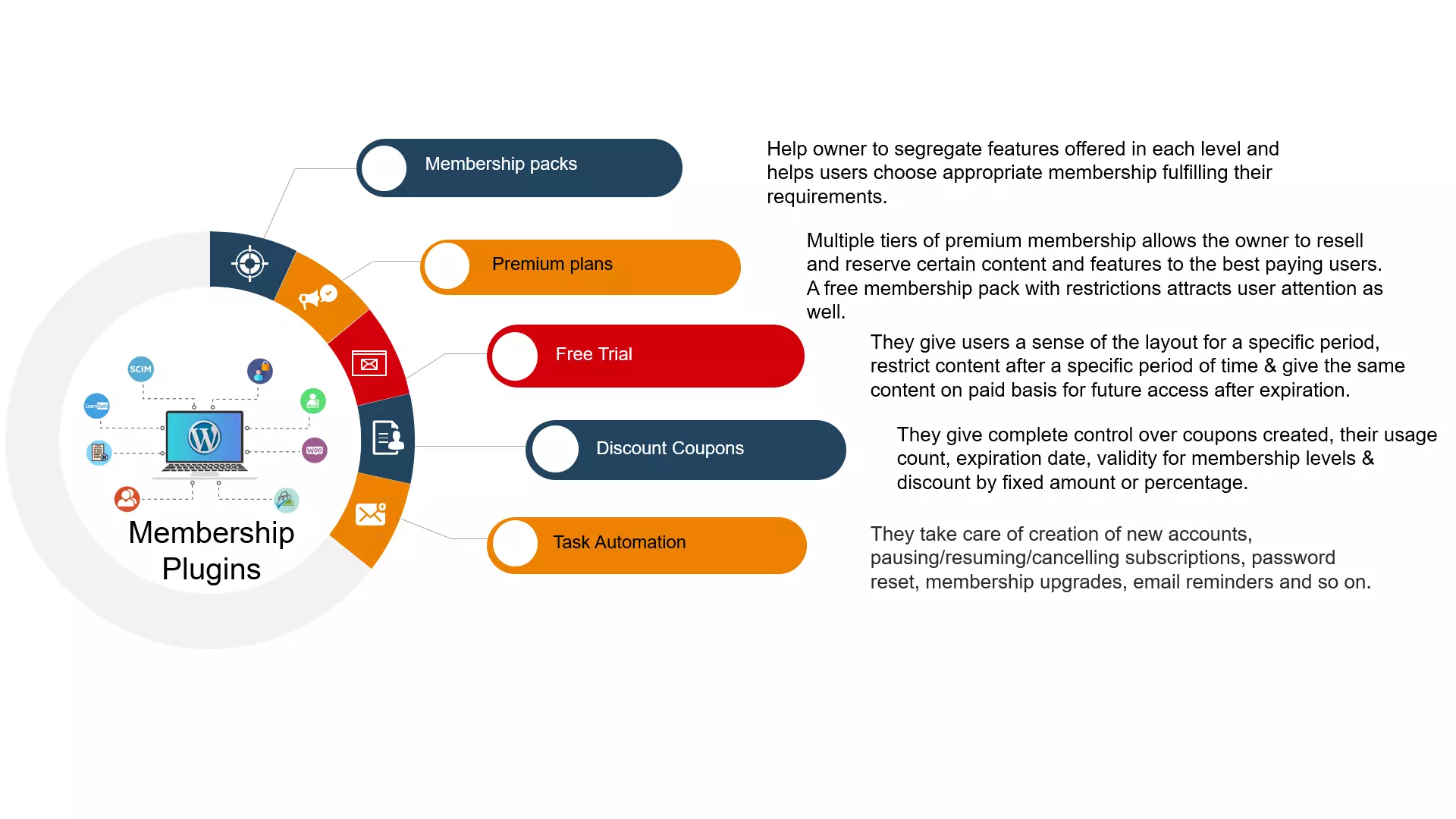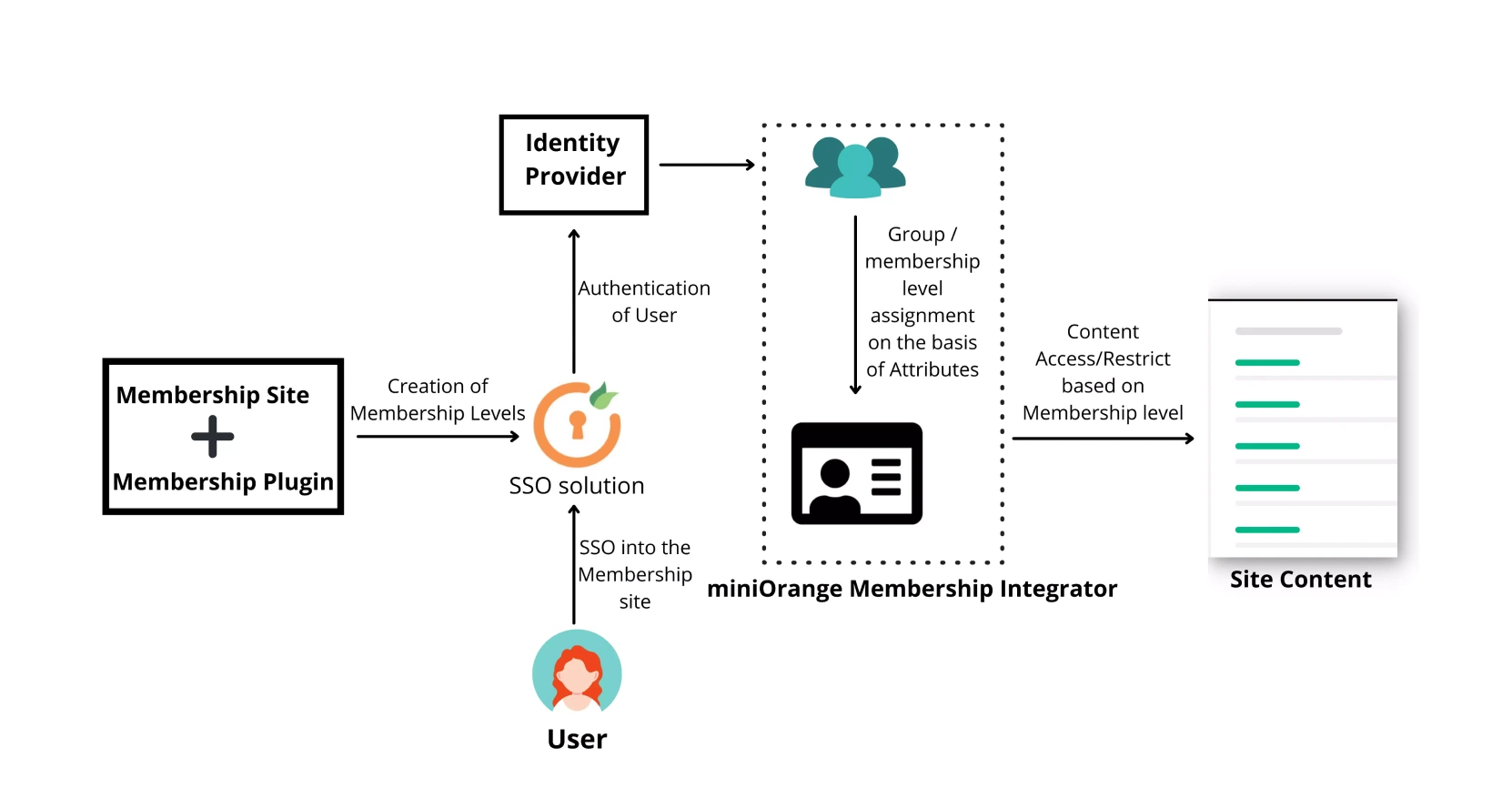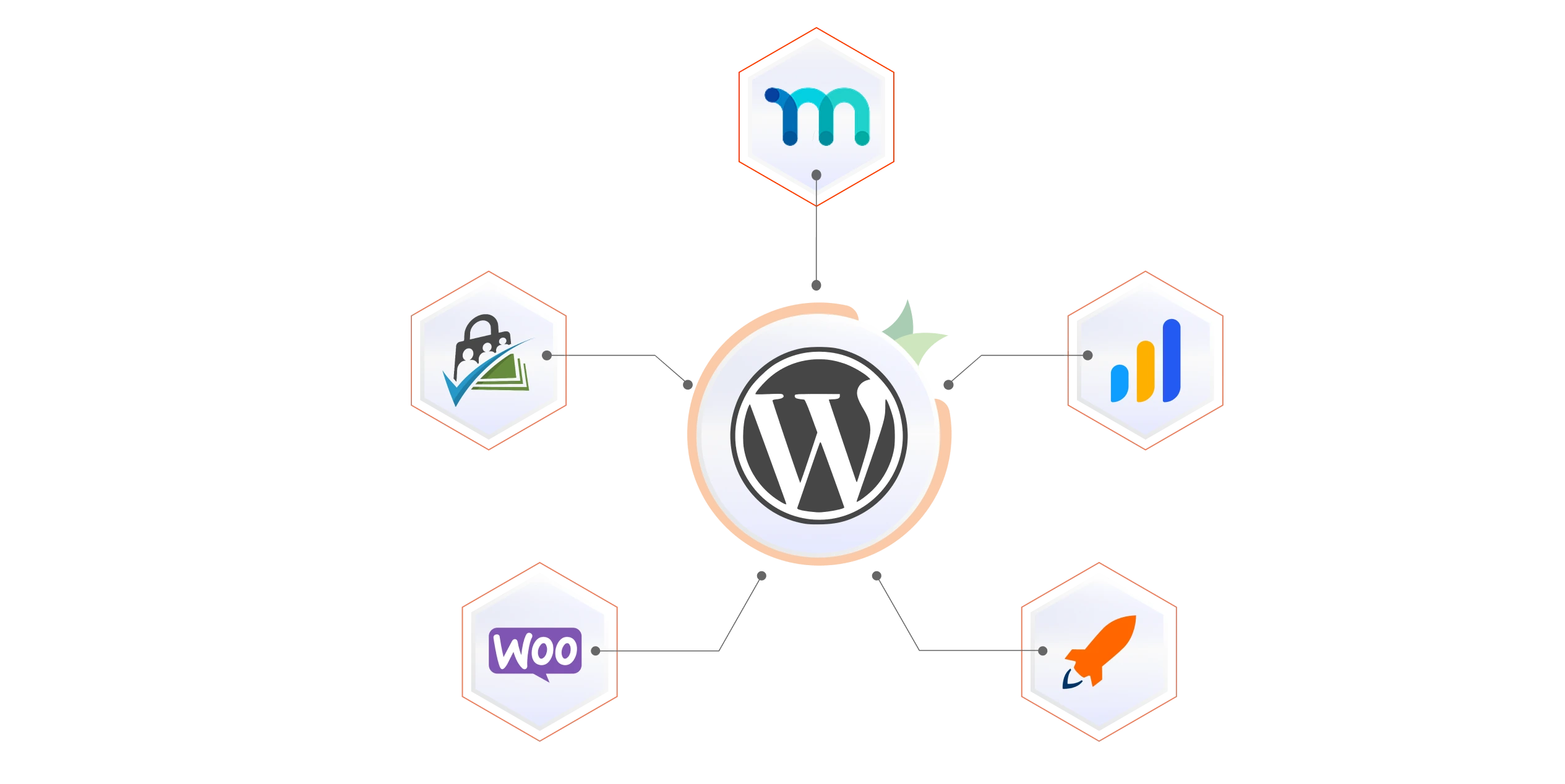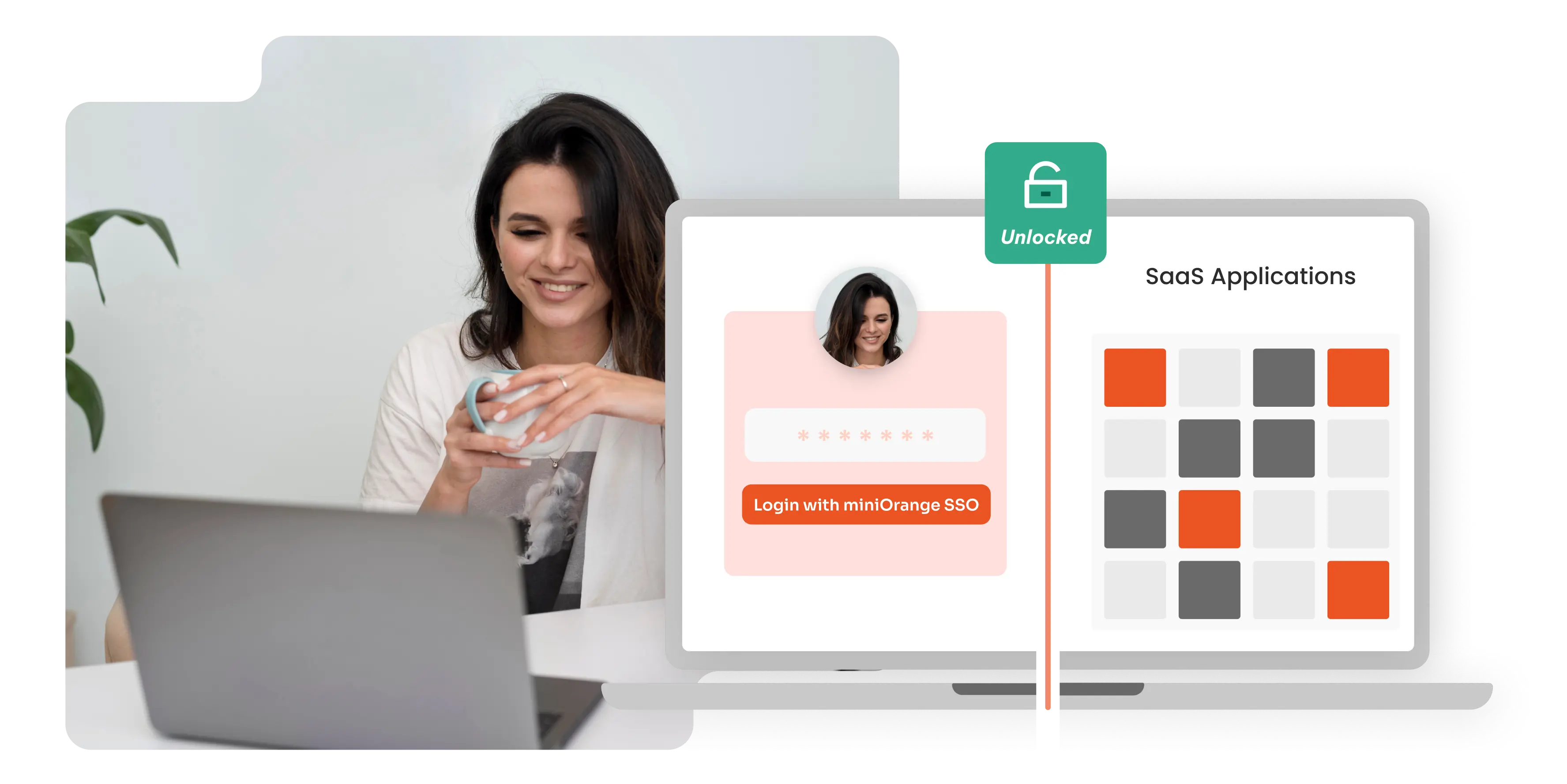Introduction
A membership plugin is designed to help create memberships and then give these members access to the content. While the main function of a membership plugin is the ability to place some or all of your site content in a restricted area that only members can access, membership plugins have varied uses.
In other words, it helps you restrict users to specific content and lets users pay in order to access the inaccessible content on your site. Most WordPress membership plugins support the PayPal payment processor. Restriction can be performed in various ways and various plugins can help you create a membership for content depending on the type of site you have.
The main reason why there are so many plugins is that each plugin is related to a specific use case, for example, you cannot use an LMS plugin to maintain subscriptions for blog sites.
Why are membership plugins used ?
Benefits of Membership Plugins

How to choose a membership plugin ?
Things to be considered while choosing a membership plugin:
1. Features
- While choosing a membership plugin it is important to consider what kinds of features do you want to provide to your members that includes providing multiple products at the same membership level, creation of group accounts, limitation of the number of devices for an account and so on.
2. Integrations
- Even though the main functionality of a membership plugin is to provide ease of user management, one would not want to be limited to that.
- Along with user management a membership plugin should be able to support integrations with other addons such as page and post restriction, media restriction and so on.
3. Subscription Management
- The main use of this would be to give the users control over their own subscriptions i.e. cancellation of membership, changing membership levels with change in the type of subscription, access of restricted content with the change in the type of subscriptions and so on.
4. Setting Up Permissions
- A good membership plugin should allow you to publish exclusive content for certain groups of users based on their membership level.
5. Drip feed content
- This is mostly used to share information with members at a scheduled time which can be anything from a blog post to course release with respect to payment i.e., pre-paid before course release or access after the payment of the course.
Different WordPress Membership plugins best suited for users according to their requirements
1. MemberPress
- This membership plugin allows users to create and manage new membership websites or convert existing WordPress websites into membership sites.
- Any organisation can use the MemberPress platform to monetize its premium collection of resources, restricting its accessibility only to paid groups or making it available only for a limited amount of time, i.e., providing a free trial.
2. LearnDash
- LearnDash is a WordPress LMS that enables institutions/organizations/e-learning platforms to create their own online courses. Using LearnDash they can modify the layout of their courses, make them more user-friendly and further subcategorize and divide them into lessons and topics.
- It also gives them the ability to add functionality using free and paid add-ons which helps them keep track of the progress of their clients/students/employees.
- This plugin is designed for premium content sites, online courses or LMS, training-based memberships, clubs and associations, members-only product discount sites, subscription box products, paid newsletters, and more.
- It supports the main site with features such as content restriction, membership management, payments & invoicing, admin reports, administration tools, site enhancements, etc.
4. WooCommerce
- WooCommerce helps you sell any physical and digital products from the e-commerce homepage. This includes building a membership site, taking appointments and bookings online, selling subscription-based products, etc.
- It offers many valuable features like order tracking, customer engagement, delivery status updates, inventory management, personalized coupons, showing products available on other sites with an affiliate link for customers to purchase them and more. WooCommerce comes with all the features a new web store requires to function properly.
5. WP-members
- WP-Members provides a free and easy setup that enables you to hide or restrict selective content to subscribers, customize the registration and profile fields to suit your requirements, create custom registration fields, and much more.
- It also provides free lifetime support and plugin updates with each paid plan at no extra cost and with unlimited membership levels and subscription packages.
- For example, an organization’s access to various resources can be provided on the basis of their work profile.
Integrations provided by miniOrange with WordPress Membership plugins
| Features | MemberPress Integrator | LearnDash Integrator | BuddyPress Integrator | Paid Memberships Pro Integrator | WooCommerce Integrator | WP-members Integrator |
|---|---|---|---|---|---|---|
| Content Restriction | Unlimited levels of restrictions and powerful access rules | Restricts content till course subscription | Restriction by group type or member type | Restriction by post, page, block, shortcode, etc | Multiple type and multi-level restrictions supported, e.g., restriction by post, WooCommerce products, etc | Restrict or hide content and menu items to logged-in subscribers only |
| Features | Map the SSO users to different MemberPress Membership levels as per the attributes sent by your Identity Provider | Map the Identity Provider group information of your users to the different Learndash groups during SSO | Assignment of Identity Provider attributes to BuddyPress user profile attributes | Map your users to different Paid Memberships Pro levels depending on their groups user attribute in IdP | Assignment of the user attributes sent by your Identity Provider to pre-populate the WooCommerce checkout page fields. | Maps the user attributes fetched from your Identity Provider with Members attributes. |
| Default Memberships / Roles | Default automatic membership level assignment to unmapped users | Default LearnDash group assignment to unassigned users | Assignment of users to different MemberType on the basis of IdP attributes | Default membership level assignment to unmapped users | Default WooCommerce role assignment to unassigned users | Default role assignment based on IdP groups |
Note: All the above integrators provide support for Multiple Identity Providers which means that you can configure Membership Levels/Roles based on the user IdP groups, for each IdP individually.
How does Single Sign-On work for a Membership Site ?
With the help of minOrange solutions, membership plugins enable the owner to Single Sign-On into the membership site and to map users on their site to assign certain roles by dividing into groups and providing access to the site’s content based on their roles.
Membership Assignment with Single Sign-On in a Membership Site
When a user performs SSO in a membership site, miniOrange membership integrator assigns users to groups on the basis of membership packs subscribed by them. Each level of membership gives access to content along with the other features offered by the pack.

With the help of the integrators, each member of the group is assigned a role/membership level that allows the user access to a specific part or course of the site.
-
When a user performs SSO into a site, the SSO plugin authenticates the user through the IDP.
-
If the user is authenticated in the IDP, a membership level is assigned to it by the miniOrange integrator.
-
In accordance with the type of membership, the plugin gives access to the information to the user.
-
If an unmapped user logs in to the site, the user is assigned a default group giving them default membership and only the information available to that group is made available for them.
Why is Single Sign-On beneficial in a membership site ?
The most basic yet one of the most important reasons why WordPress SSO should be used in membership plugins is the ability to log in without additional login credentials. Jumbling up passwords is a problem that even the smartest person faces, so when you have an option of logging in to a site without creating a new account, you immediately like the site a little more.
Using SSO for logging in will allow you to map users into specific groups and set membership levels accordingly. Other than that it will also help to map unmapped users who try to access your site which makes content restriction easier. For example, you have an LMS site for which you want to restrict access only to the authorized students. These students will already have a group with set roles and membership levels and their access will be set accordingly.
Each membership plugin offers a great solution for your needs, and the best choice can be made by looking at the features that each one offers. You can customize each one of them differently with the help of miniOrange integrators to get the functionality (in terms of control of user’s membership) you need for your site.
miniOrange offers a number of integrators to go with your chosen membership plugin. To try out our range of integrators contact us at samlsupport@xecurify.com.
Additional Resources
Author





Leave a Comment